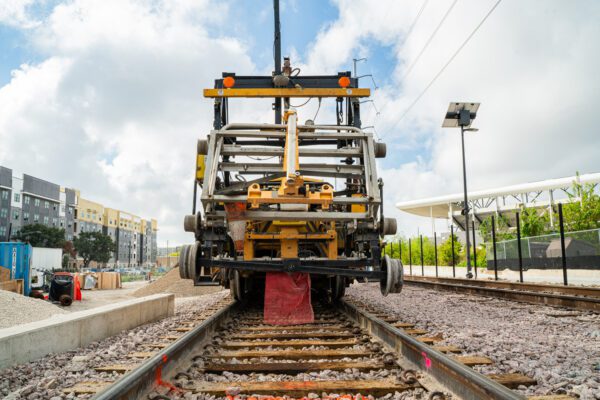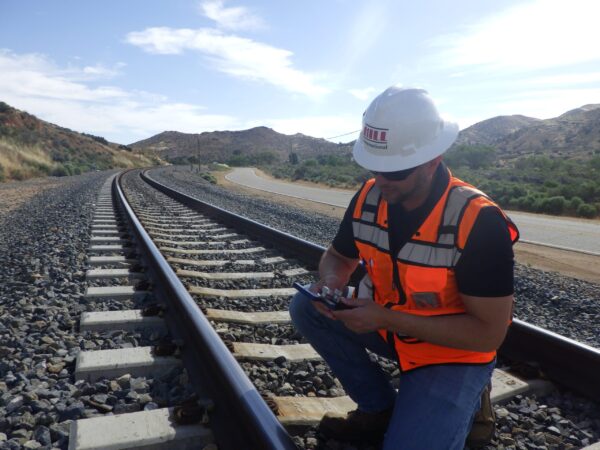
March 12, 2025 | Articles
Get Stoked: Hill International Makes Big Waves in Spain’s Surfing Scene

With global demands for greener, faster, and more equitable transit on the rise, we can expect agencies and owners around the world to continue investing in public transportation. Proving this trend are massive funding vehicles, such as the U.S. Federal Government’s Infrastructure Investment and Jobs Act. To manage these inherently complex projects, system owners must identify and implement the right delivery method. Delivery method selection has cost, schedule, and quality repercussions that last through closeout, handover, and even into operations.
Many owners are considering new and innovative delivery methods to derive the most value from their investments. One notable strategy is dual delivery, which involves splitting up works that might reasonably be packaged as a single project to take advantage of the different benefits associated with different delivery methods and improve project outcomes.

Clients can use a dual delivery approach to achieve greater efficiency and deeper customization in line with their overall project goals. This can include optimizing for schedule, cost, quality, or something else entirely. For a transit agency planning to deliver a rail line extension, for example, design-build delivery can offer notable cost and schedule advantages for works with relatively predictable designs. For elements requiring lengthier planning—such as brand-new track construction—owners may benefit more from the reduced risk associated with construction manager at-risk delivery and a guaranteed maximum price.
The Challenges
Dual delivery is not a cure-all for overcoming the challenges associated with selecting and implementing a delivery method. This approach is associated with several unique challenges and requires a strong management framework to maintain control over project outcomes. For example, a major challenge stemming from dual delivery involves doubled project communications. Reticular communication lines, two document control systems, extra meetings, and different intra-team relationship dynamics can increase projects’ management capacity needs, as well as their risk.
Other challenges include developing a quality assurance approach that can enforce the same level of quality control on both sides of the fence and cultivating a win-win approach to help ensure the project teams work together for the benefit of the owner’s vision, despite the separate contract environments. A win-win approach is often critical because of the construction crews’ proximity. In many cases, projects procured via dual delivery are adjacent or even overlapping. This means management teams have to negotiate space and staging plans, safety plans, scheduled utility outages, and more between multiple contractors.
Management Solutions
In my experience, dual delivery does not make projects more technically challenging for designers or contractors. In fact, it often simplifies the separate projects. Rather, dual delivery creates management complexity for the owners’ teams. As such, the most important prerequisite for dual delivery success is sufficient management capacity. Before undertaking such projects, owners have to evaluate their in-house management capacity, as well as any existing contractual vehicles they have for management consultant support to determine if they will need to bring aboard additional management staff. Once owners have verified sufficient management capacity, they can implement several management solutions to drive dual delivery success.
A programmatic communications approach will help owners manage the communication-heavy environment of dual delivery. This involves maintaining a complete contact list for both projects, inclusive of all project participants and stakeholders; facilitating sufficient inter-project communications to promote overall “program” success; and communicating overall updates and any impacts to both project organizations, stakeholders, and the public. For example, clients can hold meetings with all stakeholders and both contractor teams to promote safety and help minimize disruptions caused by project activities.

A programmatic approach also involves designating a contact point for all communications across both projects. Pure project and construction management firms are best suited to serve in this role, able to engage both contractors on site safety, conduct weekly coordination meetings to prevent overlaps/conflicts in work activities, promote dialogue to ensure sufficient space for each contractor’s activities, liaise with all third-party stakeholders and the public, and manage two document control systems to allow for simple inter-project document exchange as well as security for each project’s confidential materials. This approach also prevents complications related to miscommunication and improperly stored documents, driving on-budget, on-schedule delivery.
Moreover, pure project management firms are always able to act in the owner’s best interests, managing projects and negotiating challenges without any conflict of interests. This advantage is especially important on dual delivery projects, where there are generally more stakeholders and more potential conflicts. For example, because of their interconnectedness, dual delivery projects face risk related to scope allotments as the projects evolve. When end-user requirements or unknown conditions cause scope creep, pure project management firms can help owners quickly and fairly negotiate with the contractors to identify agreeable, cost-effective contract solutions for new scope allotments.
Making Dual Delivery Work for You
Despite the increased management complexity resulting from separate packaging and delivery methods, dual delivery provides opportunities to realize cost, schedule, and quality efficiencies on complex transit projects. By leveraging the power of creative delivery approaches, such as dual delivery, transit owners throughout the U.S. and around the world will be able to deliver more successful projects that promote access to economic opportunities, enhance sustainability and environmental justice, and improve system efficiency for the people that depend on these services.
At Hill International, Inc., we are proud to participate in innovative dual delivery projects as construction management consultants, and I hope that our lessons learned avail owners and consultants working on rail and transit projects using a similar project delivery approach.
About the Author

Andrew Ditter, PE, has more than 25 years of experience in the engineering industry. He currently works as a Construction Manager out of Hill International, Inc.’s Austin, TX, office. His duties include day-to-day coordination with his project teams and all aspects of project management, including reporting, cost management, change management, schedule management, contract management, communications, document control, safety management, and risk management. Some of Andrew’s notable transit assignments include CapMetro’s McKalla Station and Red Line Double-Track projects in Austin, TX, and Valley Metro’s Operations and Maintenance Center Expansion project in Phoenix, AZ.
To speak with Andrew about customizing a dual delivery approach for your transit project, reach out to [email protected]. To learn more about how Hill International, Inc. helps rail and transit clients around the world deliver the infrastructure of change, click here: hwww.hillintl.com/rail-transit-practice/.
Share

March 12, 2025 | Articles
Get Stoked: Hill International Makes Big Waves in Spain’s Surfing Scene

March 9, 2025 | Articles
Project Manager TJ Pinales: Helping Along the Road in San Antonio

March 4, 2025 | Articles
Balancing the Equation: An Interview with Project Manager Tracy Wiyrick

March 1, 2025 | Articles
A Lifelong Project: Calypso Kyriakopoulou’s Multifaceted Career in Construction

January 23, 2025 | Articles
Plotting a Roadmap to Success on the Torres de Colón Renovation

December 12, 2024 | Articles
Progressive Design-Build for Rail and Transit Projects: Room to Run

December 9, 2024 | Articles
Unlocking Growth: Maximizing the Benefits of the SBA’s Mentor-Protégé Program

December 8, 2024 | Articles
Mediterranean Luxury a Century in the Making: Four Seasons Resort Mallorca at Formentor